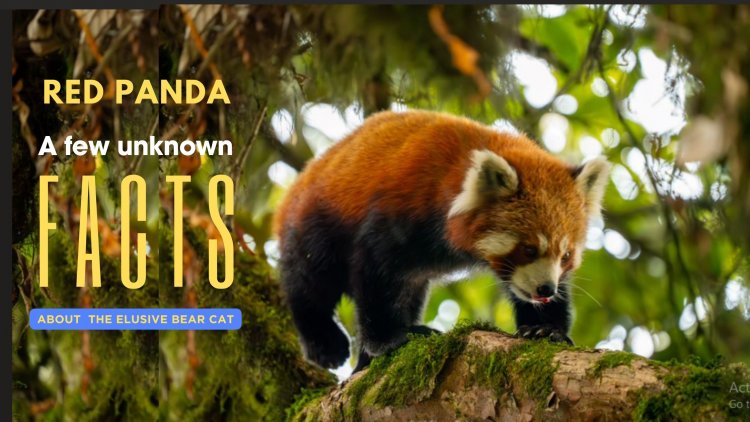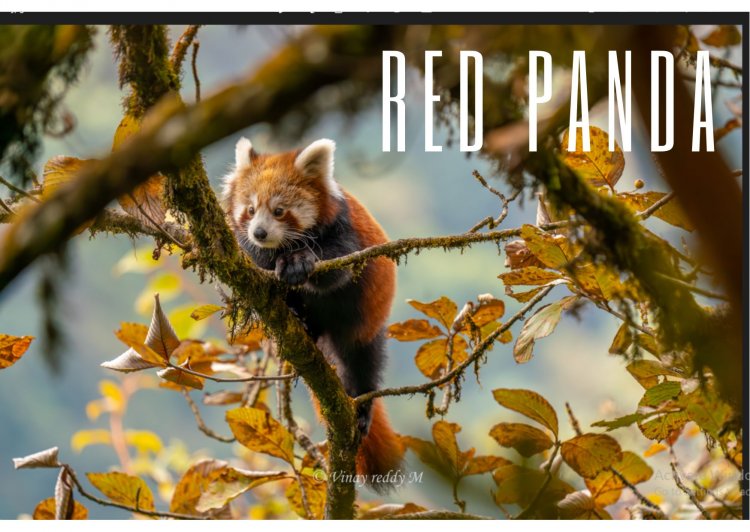Tucked away deep in the serene forests of Singalila National Park, lives a long-clawed, bushy-tailed firefox, whose ancestors have thrived among the trees for millions of years. Singalila was the first national park in India which is the abode of cute little teddies.
A shy, elusive red panda!
1. Himalayan Home
The elusive and endangered Red Panda is the crown jewel of Singalila National Park. It is the home and last habitat for Red Pandas and one can spot them literally by keen observation and by trekking along the various mountain trails, particularly along the route to Sandakphu and Phalut circuit.
The thick bamboo growth ranges from 2000 m to 3650 m above sea level. The forest type broadly ranges from temperate broad-leaved mixed forests to alpine vegetation and the rhododendron blooms during summer ( Mar to May ). The whole valley is set in ablaze with a riot of colours, The best place to spot the firefox with spotters embarking this fascinating creature in its natural habitat.

2. Unique Dietary Practices
Red pandas rely totally on bamboo for almost all their dietary needs. Unfortunately, having such a specific requirement has contributed to them being on endangered status today. Because of shrinking habitats, there is a deficiency of wild bamboo in forests. Dependency on them, and habitat loss have made red pandas find themselves with less food and fewer places to find their meal.

Bamboo
Bamboo makes up around 95 percent of the red pandas’ diet and serves as their only food during the winter, from December to April after a snowfall. They eat only the bamboo species rich in fiber and protein -- one or two types out of 40 or more that might grow in their territory.
Unlike other mammals,their digestive systems don’t have microbes to help them absorb plant nutrients, so red pandas digest less than a quarter of the food they eat. As a result, they have to consume around 25 to 30 percent of their body weight every day. They spend 12 - 14 hours foraging and eating daily. They also prefer to eat tender leaves and shoots
Other Choices of food
The food consumption and dietary practices of Red pandas vary during the different seasons. They eat bark, Sorbus fruit, grass, lichens, roots, flowers, and leaves of plants other than bamboo. They also prefer to feed on acorns, berries, fruit, and mushrooms. Occasionally they add meat to their diet in the form of insects, small birds, bird eggs, mice, and rats. Pregnant red pandas also consume lizards and small birds.
3. Low Production rate
Red pandas breed once a year in early winter. The females come into heat in January or February, and it lasts one to three days. Pandas have a slow reproductive rate. Mature females usually breed just once every two or three years, and a typical female panda may bear about five litters in her lifetime. Adult red pandas rarely interact with each other outside of the mating season.
4. Long Multifunctional Tail
Red pandas have long, wooly tails that help them maintain balance while negotiating the branches of trees and stay safe while moving through the canopy
Red pandas don't hibernate through the winter, so their thick fur and bushy tails also protect them from the severe cold, wind, and other harsh weather.
While they can't exactly extend their arms like an acrobat to keep their balance, they can use their tails. If a red panda starts to lean in one direction, it can swing its tail the opposite way to steady itself for support.
5. Solitary Nocturnal Behavior
They are territorial and solitary except during the mating season. They are crepuscular and nocturnal, spending the day sleeping in trees and using the night to mark territory with urine and musk and to seek food.
Red pandas are agile climbers and sleep and rest in high trees. They sleep for up to 17-18 hours a day, curled up on a tree branch or in a tree hollow. They wrap their long, bushy tail around them to keep warm. They clean themselves, much like cats, and communicate using twittering sounds and whistles. Red pandas exchange information using scent glands, visual cues, and a variety of calls. When they feel threatened, red pandas make a grumbly barking sound Red pandas also mark their trails by secretions from foot glands and mark frequently using anogenital glands, urine, and feces
6. Unique Anatomy
In addition to the normal five digits in the hands seen in most mammals, the red panda does have an enlarged wrist bone, the radial sesamoid, that acts as a sixth finger, an opposable “thumb”. These pseudo-thumbs are typically an enlarged, modified wrist bone they use for climbing trees and grabbing bamboo stems and tree branches.
The pandas have pseudo-thumbs for different reasons
The pandas use the false thumb in food manipulation, holding stalks of bamboo and separating the leaves Detailed observations of this type of behavior in the red panda indicate that ‘food items are grasped in a single forepaw and brought to the mouth while sitting, standing or occasionally lying on the back heads up ’
It is been always considered the appearance of an extra toe or finger as a status symbol in their society, their faith has not been just a figment of the imagination. Being born with an extra finger or toe has been a boon for the pandas by birth.
7. Glow in Dark
It's difficult to spot them in time and impossible to see them at night. The white color on the red panda's face is "almost luminescent" and can guide a mother's lost cubs in the darkness!. A rare feature is a boon by birth. The reddish 'tear tracks' extending from the red panda’s eyes to the corner of their mouth will protect them and keep the harsh sunlight out of their eyes.
After finally sighting a Red Panda in the wilderness and being interested in them and conservation, we're sharing some fascinating information about this awesome animal. Hope this will interest you!

















